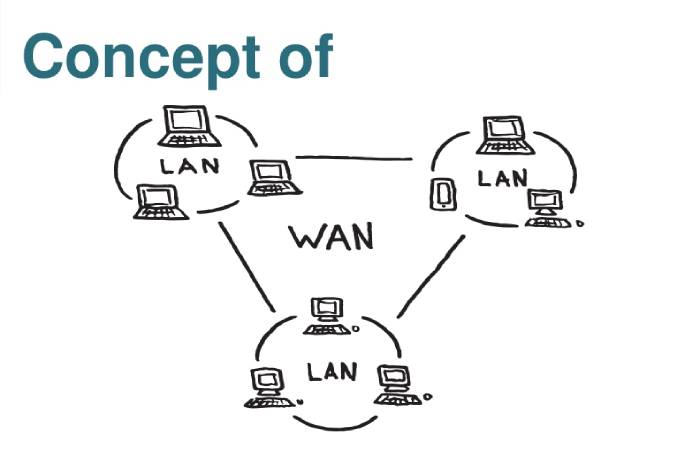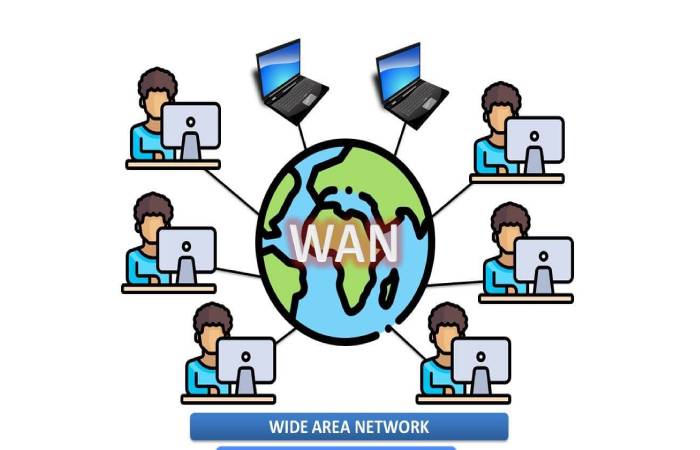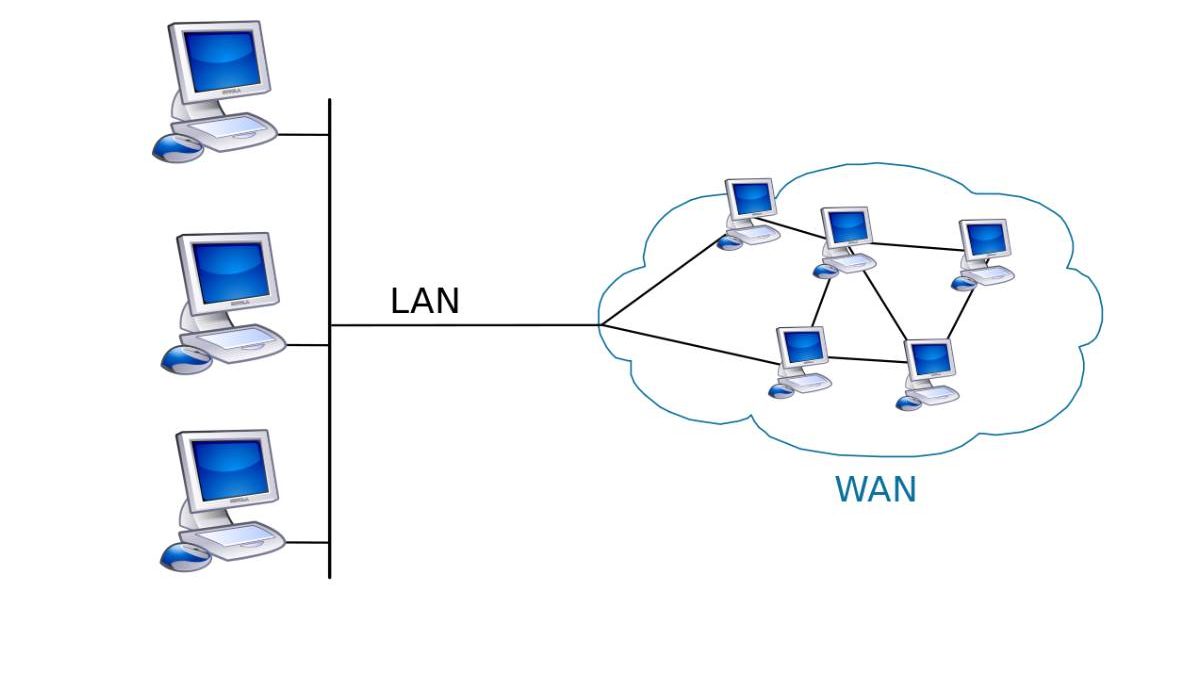Table of Contents
WAN Network Definition
WAN is the abbreviation for Wide Area Network. These networks are spread over large geographic areas and connect smaller networks such as LAN (Local Area Networks) or MAN (Metropolitan Area Networks) networks. For this reason, they only use it in the professional sector.
Internet service providers operate public WANs to allow their customers access to them. The private wide area networks are used primarily by businesses, for example, to enable cloud services and networks to connect different company locations.
The best known and largest WAN network globally is the Internet, a worldwide network made up of computer networks. Data is transferred between interconnected computers using standardized Internet protocols.
More Content by Concept of WAN Network

WAN network joins several smaller networks into one. Thus interconnecting users separated by enormous distances, with higher transmission rates, and with different levels (layers) of data.
It implies the need for machines dedicated entirely to the execution of programs of the user (hosts), the presence of devices routers and switches, or masking sub-network for connecting multiple hosts.
How does a WAN Network Work?
- As a WAN network does not connect individual computers, but entire networks, the technology used differs from other networks. Employ other transmission protocols and address concepts.
- WAN networks use transmission protocols and techniques from layers one to three of the OSI reference model.
- In this way, a WAN operates at the physical layer (layer 1), the link layer (layer 2), and the network layer (layer 3).
- Wide area networks use a uniform addressing scheme because unaddressed sending of data would be inefficient with the number of networks connected.
- Intermediate systems or network nodes, such as switches, bridges, and routers, ensure that they send data packets forward to the correct address.
- It uses hardware. Data packets are sent from one subnet to the other and delivered to the correct network participant, be it a PC, a smartphone, a television, or a refrigerator.
- The necessary technology of this is the TCP / IP protocol stack.
- The different protocols of this family of protocols guarantee, for example, that the data is processed correctly and that the packets reach their destination, even if there are transmission difficulties.
Types of WAN Network

1. Switched by Circuits
- A call requires establishing communication after each user has a direct link through the network’s different segments.
2. Switched by Message
- For this kind of network, the switches are usually computers that accept the terminals’ traffic with which it connects.
- These teams examine the address in the header of the messages and save it from being attended.
- And also, the messages can delete, stored, redirected, or answered automatically.
3. Switched by Packets
- The data sent by each user divide converted into a series of small parts that join to recompose the initial information once received by the recipient.
- It is worth mentioning that each packet browses the network independently as if it were individual entities, which lightens traffic and facilitates errors correction. If only one of them fails, it is not necessary to resend the rest.
4. Connection-Oriented Networks
- They serve a large number of users, charitable each one the feeling of having exclusive resources.
- This perception knows as a virtual circuit (or virtual channel ), and it belongs to the plane of the channel and port multiplexing.
- And also, the union of a least of two information channels in a single transmission medium a device called multiplexor.
5. Networks not Oriented to Connection
- They call datagrams and characterize by going from the free state to the direct data transfer.
- It should note that this type of network does not perform confirmation, error recovery, or flow control for the entire set of users.
- However, each node can admission these functions individually. The Internet falls into this category.
Examples of WAN Network
- The Internet allows connection to a vast set of data online.
- A faultless example of a WAN network the Net, also known as the World Wide Web ( World Wide Web ).
- And also, it allows connection to a vast set of data available online, from anywhere in the world with an access point and an ISP ( Internet Service Provider, “Internet Service Provider”).
- The same occurs with national banking networks, which manage secret financial information or subscription television networks.
- It uses satellites and other mechanisms to broadcast paid signal to subscribed households.
Advantages of the WAN Network
Here advantages of WAN network:
- It allows the use of special software so that mini and macro computers coexist between its network elements;
- And also, it did not limit to specific geographic areas;
- Its offers a wide range of transmission media, such as satellite links.
Disadvantages of the WAN Network
Computers with a large memory capacity should use this factor directly affecting the speed of access to information.
And also, it does not stand out for the security it offers its users. Viruses and program removal two of the most common woes suffer by the WAN network.
There are several types of WAN networks, and three of the group under the classification of the switched network (in physics, beating consists of changing the destination of a signal or electrical current):
1. By Circuits
- To establish communication, this type of WAN network requires a call made, and only when the connection makes each user have a direct link.
2. By Message
- Their switches are usually computers that carry out accepting the traffic from each terminal connected to them.
- These teams evaluate the address found in the messages’ header and can store it for later use.
- And also, it is worth stating that it is also possible to delete, redirect and reply to messages automatically.
3. By Packages
- Each message sent by the users divides and transformed into some small pieces called packets, which rejoin once they reach the destination computer, to reconstruct the initial data.
- These packets move through the network independently, which positively impacts traffic and facilitates error correction. In the event of failures, only the affected parts will have to be forwarded.
Conclusion
In computing, it calls the WAN network ( Wide Area Network, Wide Area Network ) to the most considerable computing connections.
And also, the most comprehensive and fastest, which cover a large geographical portion of the world. The planet, if not the whole world.

